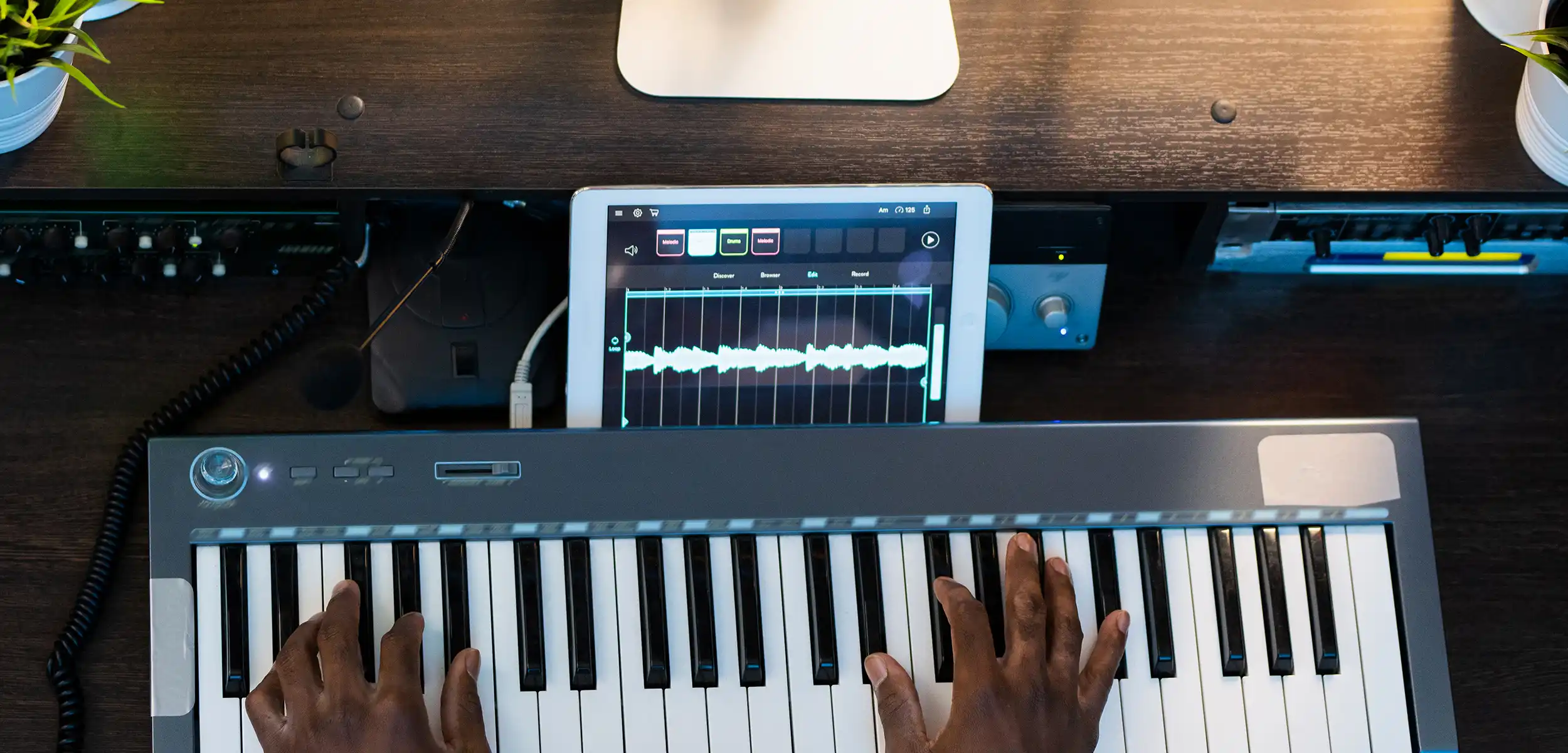In this article:
As music producers, we’ve all been there: a killer 8-bar loop that sounds perfect. You’re listening to it on repeat, nodding your head, imagining a packed dancefloor losing their minds to your groove. Fast forward four hours… and it’s still just a loop.
Finishing tracks is one of the biggest challenges producers face, and it can be incredibly frustrating. So why does “Loop Syndrome” happen, and more importantly, how do you get past it? Let’s break it down with practical tips to turn that loop into a finished track you’re proud of.
1. Stop Obsessing Over Perfection in the Early Stages
One reason producers get stuck is that they keep tweaking a single section endlessly, trying to make it “perfect.” But the truth is, perfection kills momentum. Your mix doesn’t need to sound like a festival banger on day one.
The Fix:
- Set a timer for 30 minutes to develop your loop. Once the timer’s up, move on to building the arrangement.
- Treat the early stages like brainstorming: rough ideas first, polishing comes later.
Remember: A finished track with flaws is better than an unfinished loop that’s “perfect.”
2. Use the Loop as a Foundation, Not the Destination
Your loop is just the beginning—it’s like the chorus of a song or the “main hook.” The real magic happens when you build around it. Expand it, break it down, and create moments of contrast to make the track feel alive.
The Fix:
- Copy your loop across 5 minutes on your DAW timeline.
- Create sections: Intro, Breakdown, Drop, and Outro.
- Mute parts of your loop (drums, bass, synths) to create dynamics and progression. For example, start with just the kick and bass for the intro, then gradually build up.
3. Develop a Quick Arrangement Template
Many producers get stuck because they don’t know where to take their track next. Having a basic arrangement template makes it easier to visualize the “big picture” and forces you to keep moving.
Here’s a Simple Template for Dance Music Tracks:
- Intro (0:00 – 1:00): Build anticipation with drums and atmospheres.
- Build-Up (1:00 – 1:30): Add risers, snares, or FX to create tension.
- Drop (1:30 – 2:30): Your loop hits full energy here.
- Breakdown (2:30 – 3:30): Strip it back, focus on melodic elements or vocals.
- Drop 2 (3:30 – 4:30): Bring the energy back, maybe with a variation of your main loop.
- Outro (4:30 – 5:00): Fade out with minimal elements.
The Fix:
Start with this framework, then customize it for your track. You’ll be surprised how quickly your ideas come together.
4. Add New Elements to Keep Things Interesting
If your loop feels repetitive, it might need variation. Small changes can make a huge difference and keep the listener engaged.
The Fix:
- Automate filter sweeps or reverb to add movement.
- Introduce subtle fills, new percussion, or FX (risers, crashes) to signal transitions.
- Add a counter-melody or atmospheric pad during the breakdown for variety.
Even tiny changes—like removing the kick for a bar before the drop—can create big impact.
5. Bounce Your Project and Take a Break
Sometimes, you’re too close to your track to hear it objectively. Listening to it repeatedly can make you lose inspiration or focus. The best thing you can do? Step away.
The Fix:
- Bounce your loop (or track) as an MP3 or WAV file and listen to it somewhere else: on your phone, in the car, or on a walk.
- Take notes about what’s missing or needs fixing, then come back with fresh ears.
Most times, the solution will seem obvious after a break.
6. Set a Deadline to Finish
Many producers get stuck in the loop phase because they don’t have a clear deadline. Setting a finish line, even if self-imposed, can push you to get the track done.
The Fix:
- Commit to finishing one track per week or month, no excuses.
- Share your deadline with a friend or producer community for accountability.
- Remember: Done is better than perfect.
7. Collaborate to Break the Cycle
Stuck? Bring in another producer or musician to give your track fresh perspective. Collaboration forces you to let go of perfection and get things moving forward.
The Fix:
- Send your loop to a friend and let them build on it.
- Ask for feedback, but don’t overthink it—use it as momentum to keep working.
You might be surprised how much faster you finish tracks when someone else is pushing you to move forward.
8. Accept That Not Every Track Is a Hit
Here’s a truth every producer needs to hear: Not every track you make will be groundbreaking, and that’s okay.Finishing music—even if it’s not your best—builds your skills and keeps you creating.
The Fix:
- View every finished track as practice. The more you finish, the better you get.
- Save your loops and revisit them later if you need inspiration. Sometimes, what doesn’t work now becomes magic in the future.
Final Thoughts: Let’s Finish Those Tracks
Loop Syndrome happens to all of us, but it doesn’t have to stop you from growing as a producer. By treating your loop as a foundation, building structure quickly, and accepting imperfection, you’ll start finishing tracks more consistently.
Every finished track is a step forward, and each one teaches you something new. So take that loop, hit save, and start turning it into something great—one section at a time.
Read other articles
 June 23, 2025
June 23, 2025Feeling vs Technique in Music Production
Feeling vs Technique in Music Production
 June 4, 2025
June 4, 2025The Rise of the Middle Eastern Sound and its Impact on EDM
The Rise of the Middle Eastern Sound and its Impact on EDM
 April 4, 2025
April 4, 2025Stop Letting AI Master Your Tracks (Here’s What You’re Missing)
Stop Letting AI Master Your Tracks (Here’s What You’re Missing)

